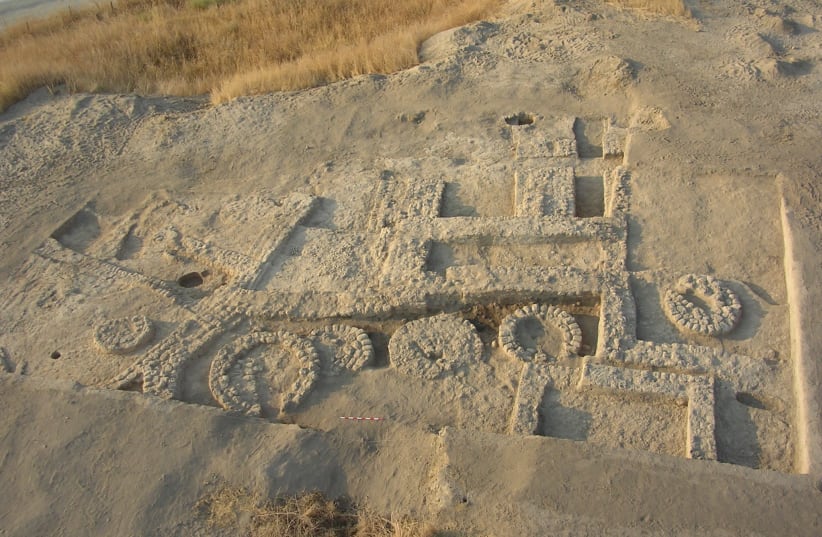Seven thousand years ago, residents of prehistoric Israel engaged in complex barter activities and protected property rights, research based on millennia-old clay seal impressions has revealed.
In antiquity, seal impressions – known among experts with the Latin term bullae – were used to sign documents or containers, ensuring they would reach their recipients closed and untouched.
Some 150 clay sealings dating back some 7,000 years were found in an excavation conducted by Hebrew University of Jerusalem archaeologists in 2004-2007 in Tel Tsaf – a prehistoric village in the Beit She’an Valley in the North. While their purpose was the same, almost all of these sealings were simple pieces of clay, without any impression on them.

However, an individual small sealing did feature an impression, composed of two distinct geometrical patterns.
The result of the research on these artifacts has now been published in the latest issue of the academic journal Levant.
“Even today, similar types of sealing are used to prevent tampering and theft,” said Hebrew University Prof. Yosef Garfinkel, who led the excavation and is one of the authors of the paper. “It turns out that this was already in use 7,000 years ago by landowners and local administrators to protect their property.”
The artifact is one of the oldest of its kind ever found in the region.
According to the researcher, the fact that two patterns were impressed might indicate that two people were involved in the transaction.
“Tel Tsaf was a big flourishing village,” said Garfinkel. “We uncovered houses that were as large as 100-200 sq.m., large courtyards, and silos which could contain from 3-4 tons to 20-30 tons of grain or other agricultural products.”
“This is unbelievable considering that 1.5 tons of grain was enough to feed a family for one year,” he added.
According to the researcher, the clay used was not local, but it came from at least 10 km. away.
“But it could have come from even farther, considering that we found evidence of exchange with regions such as Mesopotamia, Caucasia and Egypt,” Garfinkel noted. These finds include metal objects and pottery.
All these elements suggest that Tel Tsaf was home to a wealthy community whose residents entertained relations with far-away regions, even though Garfinkel noted that it would not be accurate to talk about commercial relations since there was no monetary exchange involved, but likely these objects were traded for grain.
“There is no prehistoric site anywhere in the Middle East that reveals evidence of such long-distance trade in exotic items as what we found at this particular site,” the professor said.
“There are other villages dating back to the same period in the area but none of them present similar features, which makes us believe that Tel Tsaf might have represented some form of regional authority,” he remarked.
Originally excavated in the 1970s by a team from Tel Aviv University, in the past few years Tel Tsaf has been excavated by archaeologists from the University of Haifa, “which makes it one of the very few in Israel which have been excavated by all the three universities of Tel Aviv, Jerusalem and Haifa,” Garfinkel concluded.
